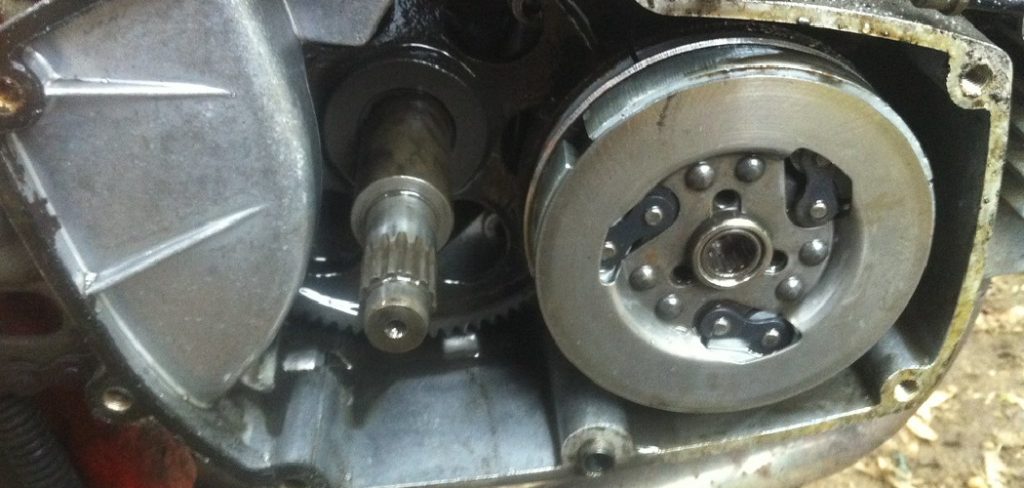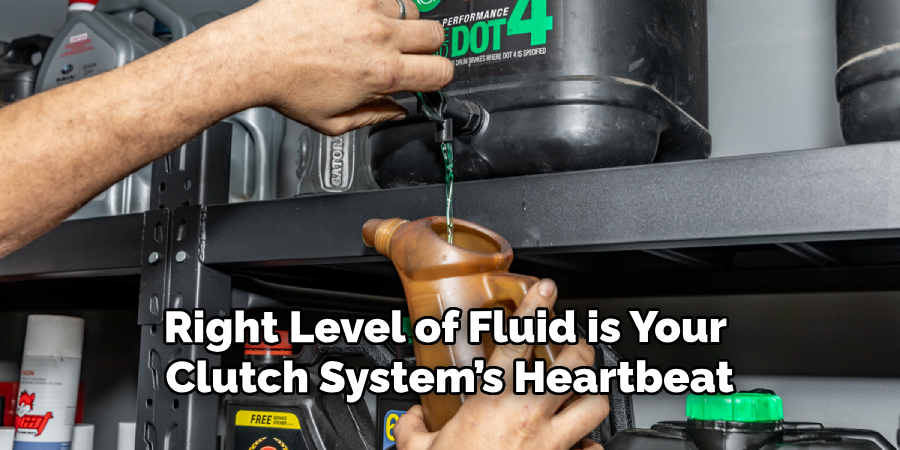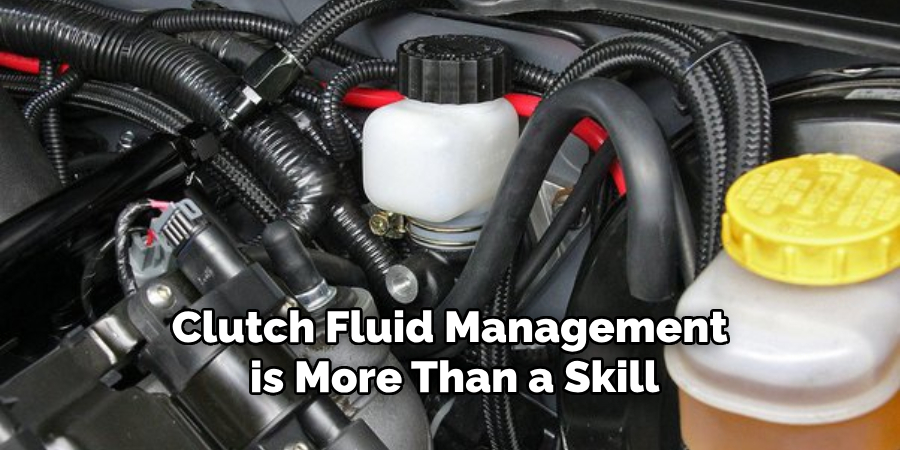As the invisible hand between the driver and engine, the clutch seems like the introverted hero of a car’s cast of components. Often overlooked until it demands attention, the clutch symbolizes a car’s balance and grace. But within this symphony of movement, another silent stalwart stands guard — the clutch fluid.

Clutch fluid might not get a feature-length credit in the entwining tales of life on the open road, but its role is crucial. For car owners who understand that even silence carries a story, how to know if you need clutch fluid can be the difference between a smooth journey and an unexpected roadside drama.
Historical Perspective: The Origins
The odyssey of clutch fluid is entwined with the story of the manual transmission. Decades ago, when cars shifted from the whims of manual timing to hydraulic precision, the importance of this unassuming fluid emerged. Hydraulic clutches superseded the grimy, often grumpy, cable-driven systems for the promise of smooth, consistent shifting.
It’s an evolution story to admire. From early cars requiring enormous leg strength to shift gears to modern precision and ease—a significant part of this leap is thanks to hydraulics, silently powered by the under-heralded clutch fluid.
The Inner Workings of the Hydraulic System
For those who haven’t popped the hood to play mechanic, understanding the hydraulic system can seem as intimidating as learning a new language. However, it’s simpler than it appears.
In a hydraulic clutch system, the movement of the pedal compresses hydraulic fluid in the master cylinder. This force is then transferred through the connecting pipes to the slave cylinder, displacing the clutch fork. Ultimately, the clutch disc is either engaged or disengaged, allowing a smooth power transfer between the engine and the transmission.
The Ripple Effect of Low Clutch Fluid
Low clutch fluid isn’t just a minor inconvenience. It’s a harbinger of potential issues cascading throughout your car’s clutch system. The effects can range from pesky to perilous, with the potential to grind your gear changes to a shuddering halt.
Consequences on Critical Components
Picture the clutch as the conductor of the intricate orchestra within your gearbox. When fluid levels drop, the symphony can turn sour. The clutch disc can start slipping, the pressure plate may not release the clutch, and the release bearing can succumb to premature wear. It’s an orchestral trauma that can lead to costly repairs if left unchecked.

Embracing the Smooth Ride
Maintaining the right clutch fluid level isn’t just about avoiding crunchy gear changes. It’s also a recipe for a smoother, more controlled driving experience. Proper fluid levels ensure that gear changes are whisper-quiet, reducing the abrasive wear on clutch components and lengthening their life.
The Eco-Friendly Connection
Believe it or not, clutch fluid can also influence environmental stewardship. Proper clutch function translates to optimal engine power transfer, which cleaning means better fuel efficiency. For the ecologically conscious motorist, keeping an eye on clutch fluid is a small step towards a greener driving experience.
How to Know If You Need Clutch Fluid: A Guide for Car Owners
Knowing the language of your car’s clutch system is akin to understanding a poet’s subtlety. Here, we’ll decode the whispers and roars of a car in need of clutch fluid attention.
1. Deciphering Your Clutch Pedal’s Tale
The clutch pedal, poised between foot and floor, is the first part of your car to relay a fluid-deficient cry for help. From spongy to stuck, each symptom is a clarion call for attention.
Sponginess Unveiled
A spongy pedal is unnerving, but its cause is more elusive than its sensation. Often, it’s the sign of bubbles—air in the hydraulic system that disrupts the fluid’s pressure and, thus, the pedal’s responsiveness.

An Increase in Engagement
When your clutch pedal takes on a heuristic of its own, with a mind of greater travel, it might seem benign. Yet, the farther the pedal goes, the tougher the time your gears will engage, signaling a need for fluid inspection.
The Stiff Standoff
A stiff pedal is occasionally mistaken for a robust one, dutifully indicating a worn clutch. In reality, it could be the linkage or other components closing ranks against your comfort, demanding fluid they’ve been starved of.
Unyielding in the Downward Journey
A clutch pedal that refuses the upward call is a worrisome predicament. It’s a sign of clutch system distress, often linked to internal malfunctions demanding very external attention.
A Vibratory Sonata
When vibrations course through your clutch pedal—sometimes mildly, sometimes not so—that’s your car’s way of saying there’s a discordant note in the clutch’s operation.
2. Gear Shifting Shenanigans
Shifting gears smoothly is an art—a ballet of mechanics that shouldn’t require brute force or bated breath. If your gear changes become gear grinds, it’s a clear call for a fluid review.
The Hesitant Gear Shift
Clunky gear shifts, where the gears seem to fight back, are a telltale sign that your clutch system’s hydraulic team isn’t working harmoniously. At the heart of this tussle is often low fluid levels mediating an unequal engagement between the clutch and gears.
The Grinding Gear Teeth
Metal-to-metal is the off-beat you want to avoid in the symphony of gear shifts. Grinding noises are an overture to the components’ battle cry, signaling misaligned or mischievously engaged gears.

Slipping Through the Fingers
Just like silk between fingers, your gear shifts should be smooth. If they begin to slip, causing a sudden loss of power, it’s a symptom that fluid levels might be burning a hole through your clutched aspirations.
The Unpredictable Engagement
Gear changes shouldn’t surprise you. Their engagement should be as predictable as clockwork. When they start to become erratic, refusing the programmed dance steps, it’s time to check the choreography of your clutch fluid levels.
The Jerk in the Chain
For the driver attuned to the rhythm of their car, a dodgy gear shift is felt before it makes a sound. Jerking and lurching is the surest sign that your clutch system’s steps are out of sync, often due to fluid imbalances.
3. Other Fluid Checkpoints
The pedals and the gears might be the prima donnas, but your entire clutch system operates on a cast of fluid-containing characters, each with their own theatrical moments demanding attention.
The Languid Leak
Leaks—ever the specter of any fluid-containing system—spell danger for your clutch fluid reserve and the system itself. They’re not just wasteful but often a sign of underlying component issues.
The Odor of Operation
Cars might not have the expressive capabilities of their human counterparts, but they have an olfactory language all their own. A burning smell resembling that of a slipping clutch is a message straight from your car’s underbelly, and it’s one you shouldn’t ignore.
The Dashboard Curtain Call
Modern cars come with modern conveniences, including warning lights that serve as your car’s digital vocal cords. For a clutch system in distress, these warning lights are the headlights to a larger, unilluminated issue.

That’s it for our guide on how to know if you need clutch fluid. Remember, understanding your car’s language is key to keeping it running smoothly and efficiently. Keep an eye out for symptoms and take action promptly to avoid costly repairs.
The Scourge of Low Fluid: Causes and Resolutions
Leaks and Their Lurking Ways
Leaking fluid, while obvious in its wastefulness, is often insidious in its detection. From the sneaky seep to the deluge, leaks are the result of worn components seeking mercy from their master.
External Leaks Exposed
Where there’s a system in need, there’s often a leak not far behind. The culprits—often the master or slave cylinders and their seals—are as predictable as they are weary.
Internal Leaks Unearthed
Internal leaks, the traitorous turncoats of fluid containment, are harder to spot but no less dangerous. Worn components like the clutch disc or the pressure plate can transform into agents of fluid freedom without warning.
Wear and Tear: A Natural Nemesis
Evaporation and absorption are the duo that every fluid container knows, and the clutch system’s reservoir is no exception. While natural, this attrition demands regular replenishment to avoid the unexpected pinch of low fluid levels.
System Failures and Their Flailing Fluids
Sometimes, a low fluid level is more than a top-off away from resolution. Broken springs, faulty bearings—every introverted clutch system has its extroverted failures that mandate a professional embrace.
Checking Your Clutch Fluid Compass
Checking your clutch fluid’s spiritual level is more than a diagnostic chore—it’s an engagement with your car’s well-being. From reservoir to reality, this is how you commune with your car’s fluid soul.
Locating the Liquid Lair
The journey of a thousand car miles begins with a single step—or, in this case, a single location. Finding your reservoir is the first step in this fluid dance, and often, the owner’s manual is your trusty choreographic guide.
Visual Interpretation Made Clear
A glance is worth a thousand diagnoses. The right level of fluid is your clutch system’s heartbeat, with color and clarity as its vital signs. Anything less than perfect should sound the diagnostic alarm.

The Dipstick’s Refined Dance
Some cars come blessed with a dipstick. For these fortunate few, it’s a simple matter of observation, plunging, and reading. And always, a clean rehearsal ensures a fluid performance.
The Professional’s Encore
There are times when expertise requires more than a makeshift at-home performance. Professional intervention becomes the overture to your clutch system’s grand restoration, and it’s a phone call away.
Leakage: The Professional’s Nightmare
Visible leaks are too big to ignore, and they’re often a sign of components needing professional intervention. From the hoses to the cylinders, only a professional eye can truly see their need.
The Diagnosis That Eludes
When your car speaks in riddles—at least the clutch system does—know that the professional is the translator you seek. Sometimes, DIY’s greatest limitation is its inability to truly see the unseen.
Embracing the Clutch’s Complexity
Some repairs are as complex as the systems they fix, and the clutch system is no exception. For those who dare, professional assistance is the thread that mends the tapestry of your car’s clutch journey.
In every turn of the wheel, your car’s storytelling is silent but not silent. It speaks in vibrations, grinding gears, and the very fluid levels sustaining its operations. The tale of the clutch fluid is the hidden narrative beneath the hood, and knowing its story is to know your car in ways most drivers never do.
For those who listen to the whispering signs, who know that every gear shift is a conversation, mastering the art of clutch fluid management is more than a skill. It’s a pact with the road—a promise that every journey, short or long, will be yours to write.
And in that journey, the clutch fluid may just very well be your unspoken co-pilot, guiding your way with the silent wisdom of the road. So listen, and may the language of the clutch fluid be your guide.

Prevention and Maintenance Tips
- Regular Fluid Checks: Emphasize the frequency of checks based on car manual recommendations and driving habits.
- Visual Inspection for Leaks and Wear: Explain how to spot wear on clutch components (pedal, master/slave cylinder) and potential signs of leaks.
- Clutch Fluid Change: Discuss recommended intervals based on car model and fluid type, highlighting the importance of using the correct fluid.
- Driving Habits: Advise against aggressive driving habits like rapid gear changes or riding the clutch, which strain the system.
- High-quality Fluid: Recommend using reputable brands and avoiding low-quality alternatives.
Regular Fluid Checks: The Key to Clutch Health
Just like your body needs regular check-ups, so does your car’s clutch system. Checking fluid levels should be a part of every driver’s regular maintenance routine, and the frequency should be based on both the specific car model and personal driving habits. Keeping an eye on fluid levels is crucial as it can indicate any potential issues before they become major problems.
Visual Inspection: A Sneak Peek into Your Clutch System
Besides checking fluid levels, it’s also important to visually inspect your clutch system for any signs of wear. Components like the pedal, master, and slave cylinders should be checked regularly for any visible damage or leaks. Pay attention to any unusual sounds or vibrations while driving as well. Any abnormalities can indicate an underlying issue that should be addressed immediately.
Clutch Fluid Change: Don’t Neglect the Mileage Markers
Like with any other fluid in your car, the clutch fluid also needs to be changed at recommended intervals. These intervals can vary based on the type of fluid used and the specific car model, so it’s important to consult your owner’s manual for guidance. Using the correct fluid is crucial as different types have different viscosity and additives, which can affect the performance of your clutch system.

Driving Habits: Smooth is Key
While showing off your driving skills with rapid gear changes or riding the clutch may be tempting, these aggressive habits can take a toll on your clutch system. They put unnecessary strain on the components, leading to premature wear and potential damage. Smooth and gentle driving is the key to maintaining a healthy clutch system.
High-Quality Fluid: Invest in Your Clutch’s Health
Using high-quality and reputable brands for your clutch fluid is essential, like other car fluids. Low-quality alternatives may be cheaper but can cause more harm than good. These fluids often lack important additives and can lead to increased wear and tear on your clutch system. So invest in your clutch’s health by choosing quality over price.
Frequently Asked Questions About Clutch Maintenance
How Often Should I Check My Clutch Fluid Level?
A: Most manufacturers recommend checking your clutch fluid level approximately every 6,000 miles or every six months, whichever comes first. However, always refer to your specific car’s manual for the most accurate guidance.
Can I Use Any Type of Fluid for My Clutch System?
A: No, it is critical to use the type of fluid specified in your car’s owner’s manual. Different vehicles require different types of fluid, and using the wrong one can cause damage to your clutch system.
What Are the Signs of A Clutch Fluid Leak?
A: Signs of a clutch fluid leak include noticeable drops of fluid under your car, a soft or spongy feeling when pressing the clutch pedal, difficulty in shifting gears, or a visible decrease in fluid level in the reservoir.
Why Is It Important to Use High-Quality Clutch Fluid?
A: High-quality fluids contain the right additives to maintain the appropriate pressure, lubrication, and protection against wear and corrosion within the clutch system. They ensure optimal performance and longevity of your car’s clutch.
Conclusion
In conclusion, the clutch system is a complex and crucial component of your car that requires proper maintenance to function at its best. Timely detection of low fluid levels and addressing any potential issues can save you from costly repairs in the long run. Regular fluid checks, visual inspections, timely changes, and adopting smooth driving habits are all key factors in keeping your clutch system healthy. Thanks for reading our post about how to know if you need clutch fluid.

